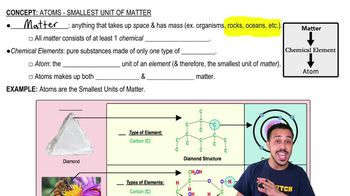Which of the following is most associated with diffusion?
a. symports
b. antiports
c. carrier proteins
d. endocytosis
 Verified step by step guidance
Verified step by step guidance



Which of the following is most associated with diffusion?
a. symports
b. antiports
c. carrier proteins
d. endocytosis
The term fluid mosaic has been used in describing the cytoplasmic membrane. How does each word of that phrase accurately describe our current understanding of a cell membrane?
Which of the following is not associated with prokaryotic organisms?
a. nucleoid
b. glycocalyx
c. cilia
d. circular DNA
Which of the following statements is true?
a. The cell walls of bacteria are composed of peptidoglycan.
b. Peptidoglycan is a fatty acid.
c. Gram-positive bacterial walls have a relatively thin layer of peptidoglycan anchored to the cytoplasmic membrane by teichoic acids.
d. Peptidoglycan is found mainly in the cell walls of fungi, algae, and plants.
Compare bacterial cells and algal cells, giving at least four similarities and four differences.
Which of the following is not a function of a glycocalyx?
a. It forms pseudopods for faster mobility of an organism.
b. It can protect a bacterial cell from drying out.
c. It hides a bacterial cell from other cells.
d. It allows a bacterium to stick to a host.